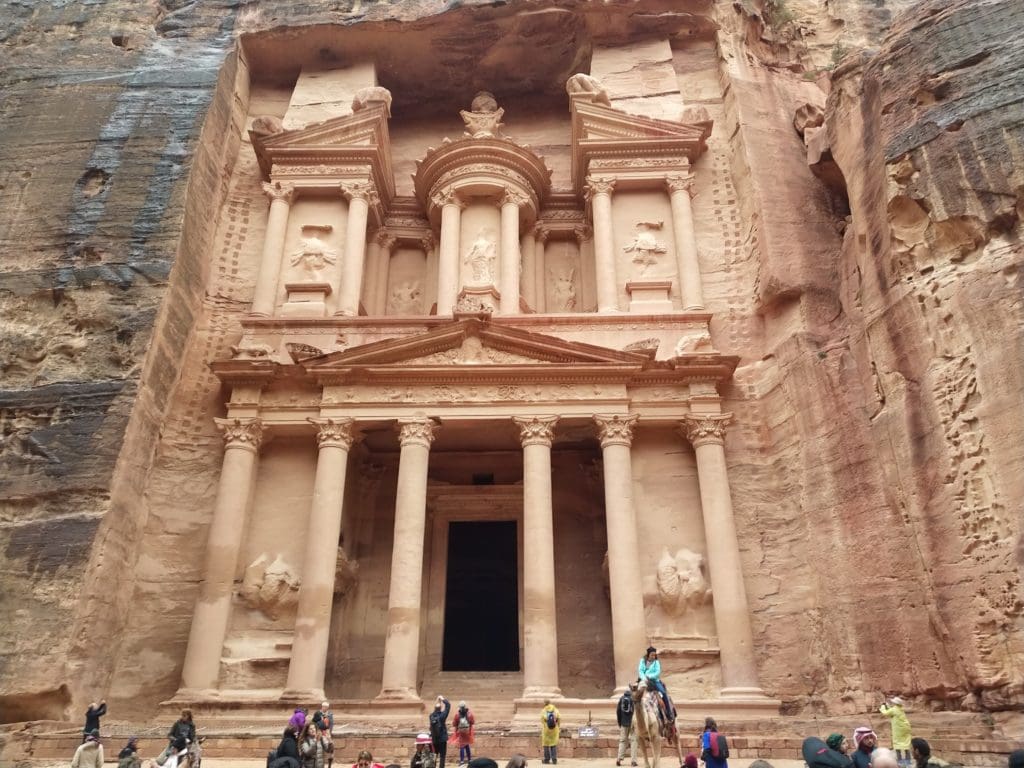 Sometimes when you dream of visiting a place for years, see it in movies, and surf Instagram for photos from every angle and in every light, you can feel a little underwhelmed when you finally get there in person. When I finally visited 2,000-year-old Petra in southern Jordan, it actually exceeded my expectations. Dubbed one of the New Seven Wonders of the World, the ancient city is a UNESCO World Heritage site and one of the Middle East’s greatest historical and archeological treasures.
Sometimes when you dream of visiting a place for years, see it in movies, and surf Instagram for photos from every angle and in every light, you can feel a little underwhelmed when you finally get there in person. When I finally visited 2,000-year-old Petra in southern Jordan, it actually exceeded my expectations. Dubbed one of the New Seven Wonders of the World, the ancient city is a UNESCO World Heritage site and one of the Middle East’s greatest historical and archeological treasures.
The mind-boggling thing about Petra is that most of the structures were carved out of sheer sandstone walls, not build up from quarried stone. Nabataean craftsmen cut stairs into the cliffs and started excavating from the top. They carved deep rooms out of the rock face, the striations of the sandstone painting the chambers in vivid color. As the ancient craftsmen moved down the precipice, they carved artistic facades in exquisite detail, taking great care to keep the designs symmetrical. The architecture was like nothing I’d ever seen before.
A Dramatic Arrival
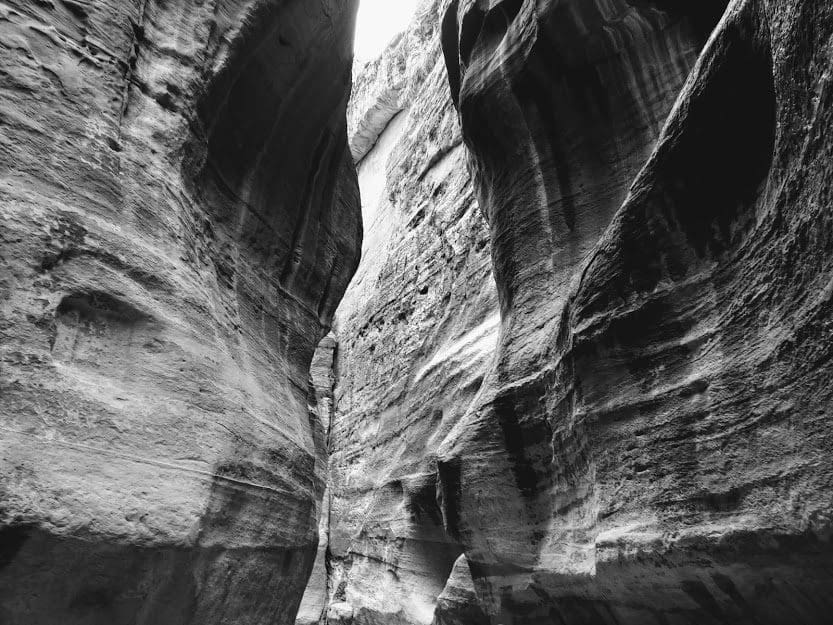
Petra lies in a desert mountain valley in what appears to be an inhospitable terrain, although early nomadic Arabs skillfully tamed the desert. As early as the fourth century BC, Petra became a major trading hub for the goods, animals, and spices traveling the Silk Road network that connected Asia, Africa, and Europe. The Nabateans garnered great wealth from this commerce center where in its heyday, 20,000 people worked. Great wealth must be protected, so the Nabateans used the natural landscape as a gateway.
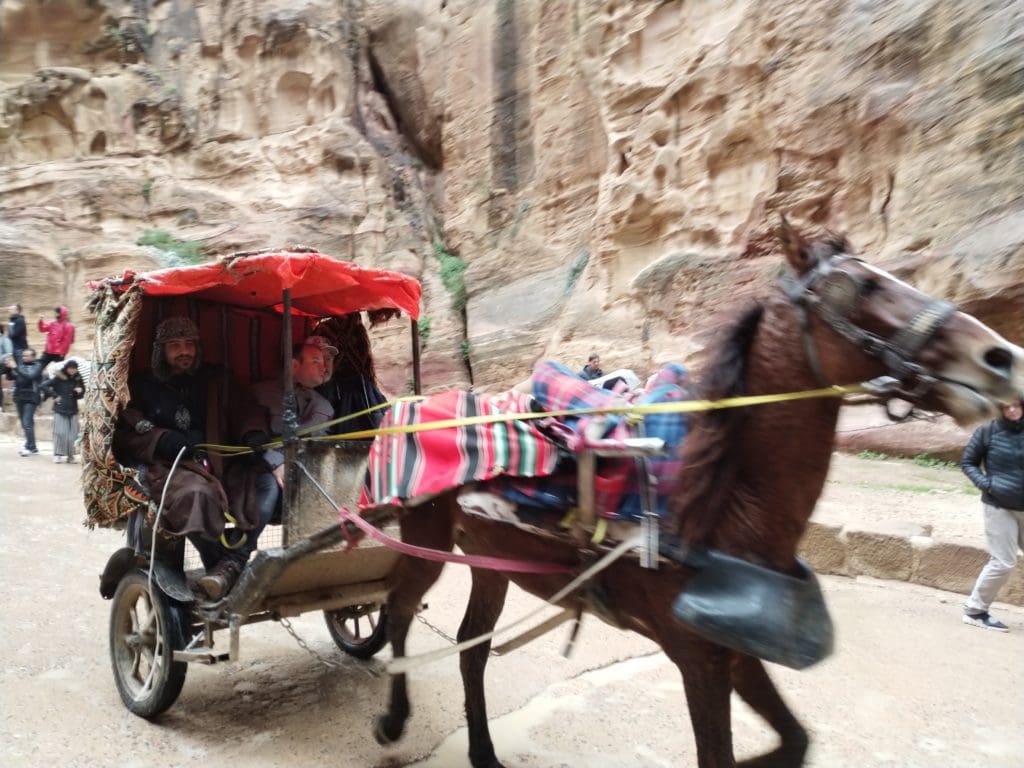
Access to Petra is by traversing the Siq, a three-quarter mile slot canyon. The rose-colored walls tower overhead, opening to a ribbon of sky at the top. Along the way, you can see decorative stone carvings and a masterful 2,000-year-old water delivery system hewn into the sides of the gorge. The walk is not strenuous, but the ground is rocky and uneven. Travel Maestro tip: You can also hire a horse cart and ride through the Siq ($40 round trip for two people); however, be advised that it’s a fast and rough ride over the ruts and cobbles, ill-advised for anyone with back problems. You’ll save some shoe leather, but not get a chance to take in the beauty of the Siq.
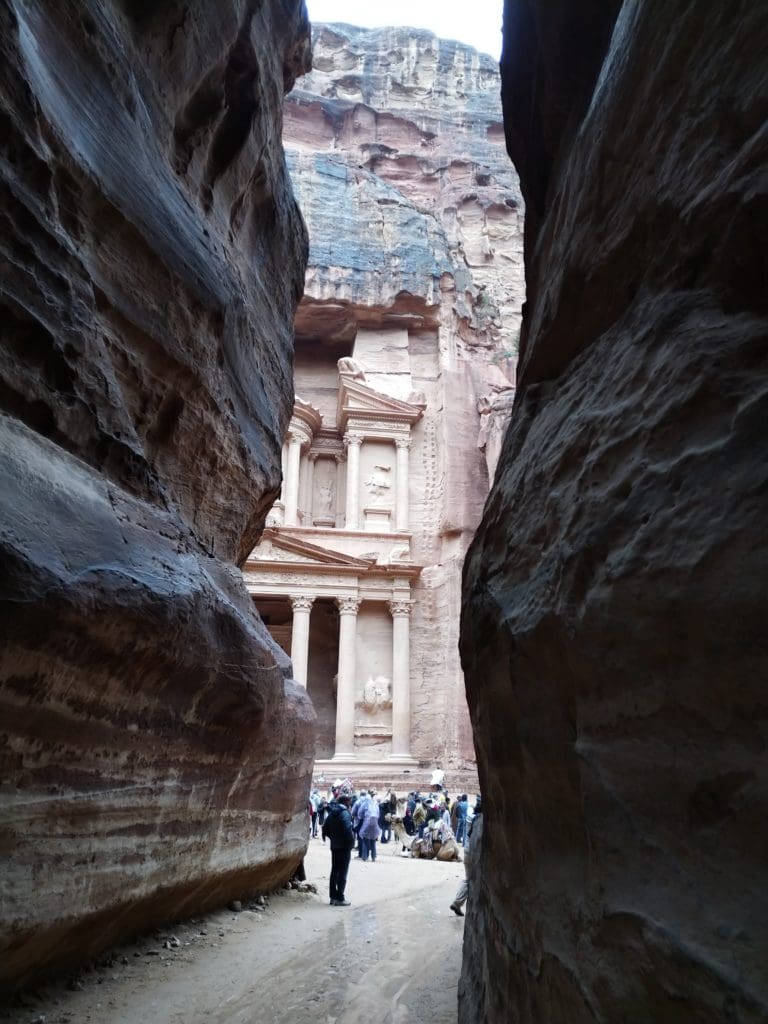
As you approach the end of the Siq, the city’s masterpiece, commonly known as the Treasury, is slowly revealed through the slot ahead. Finally, you step out of the canyon into a busy plaza. Camels waiting for riders, young boys selling postcards, and selfie-snapping tourists are in the foreground, but you look right past all that in awe toward the astounding building carved into the rock wall. The Treasury was built in the first century AD, likely as a royal mausoleum. Unfortunately, many of the carvings sustained damage from people taking target practice at them in the 1800s, but the building as a whole remains remarkably preserved.
Petra is a Huge Archeological Site
The beautiful Treasury is only the beginning of the massive site. Follow the main road and the valley opens onto a plain dotted with hundreds of tombs and intricate facades carved from the rocks. Travel Maestro tip: If you walk from the entrance of the Siq to the Monastery and back, it will be about nine miles.
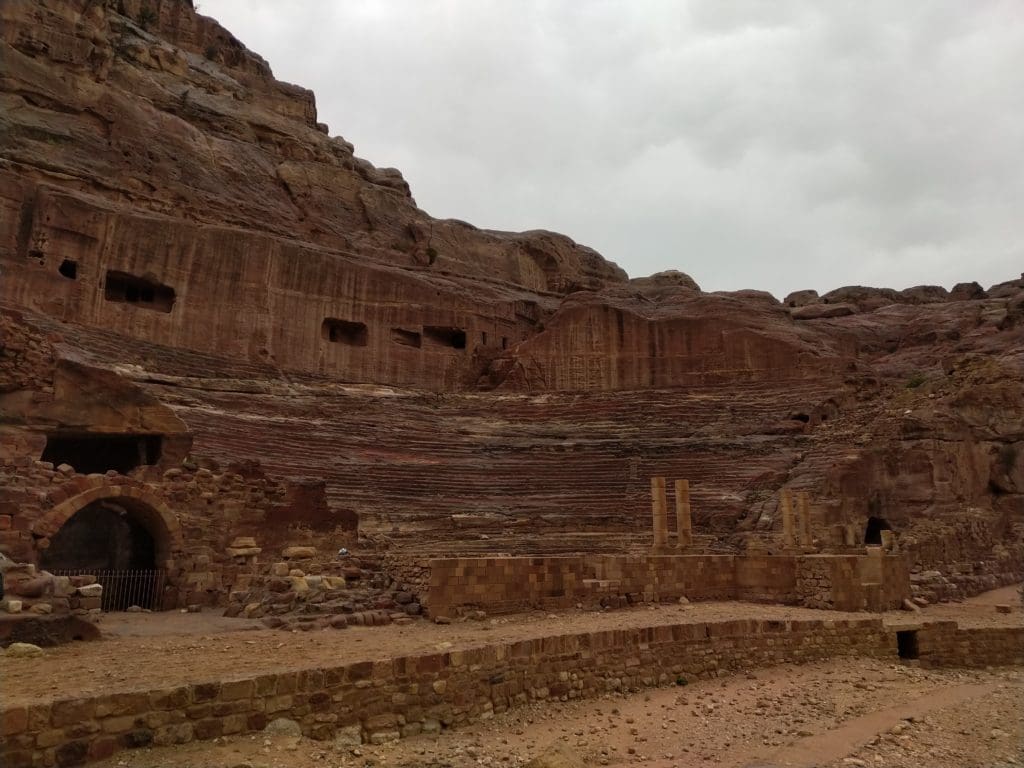
The Theatre is another incredible construction. It contains three sections of seating separated by passageways. It could accommodate 4,000 spectators and is the only theatre in the world carved into the rock.
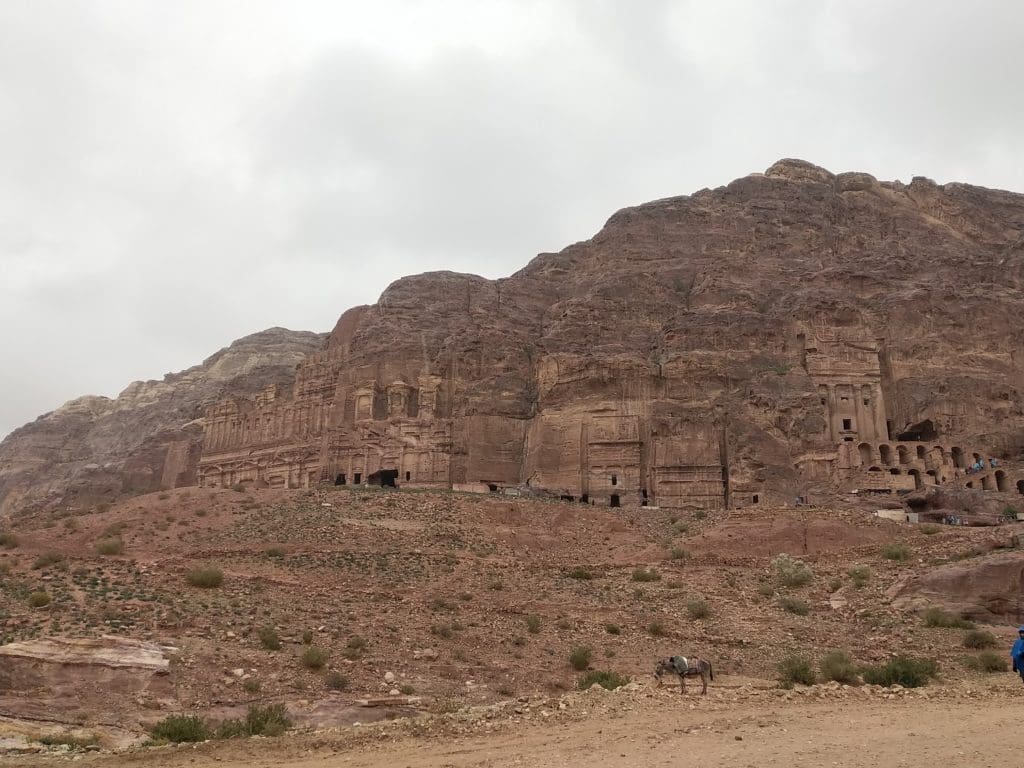
The Royal Tombs are a series of four magnificent facades adjacent to one another high up on a ridge. There I met Ahmed, a Bedouin vendor who had been selling souvenirs on that ledge for 45 years. Nice office space, I must say.
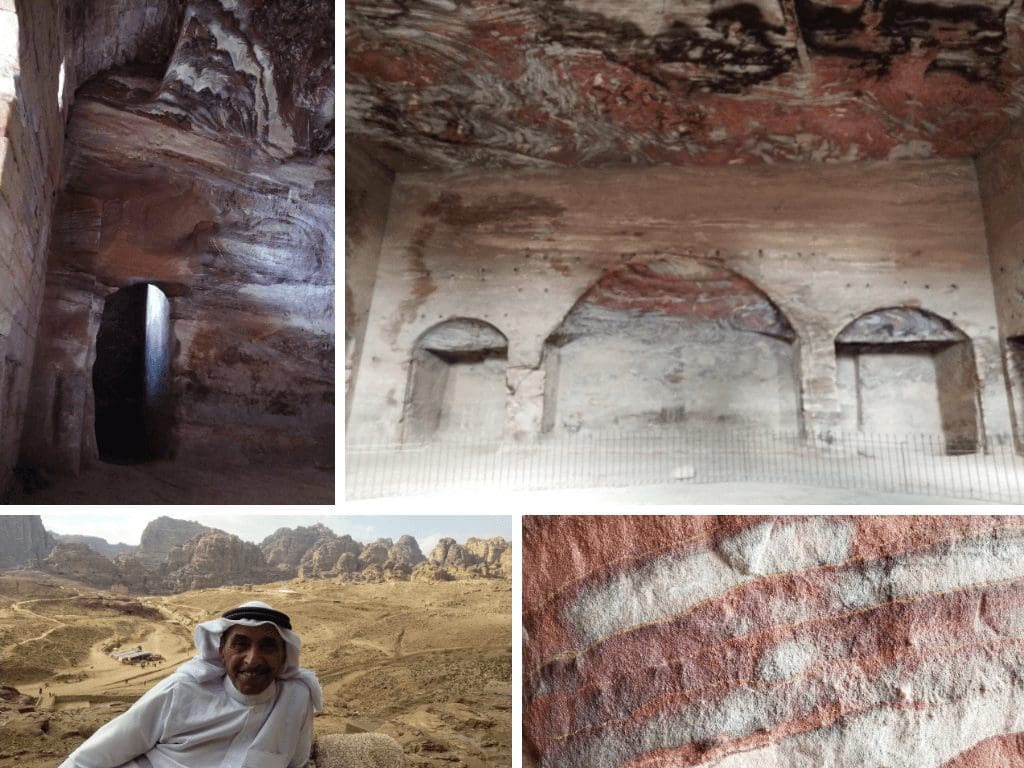
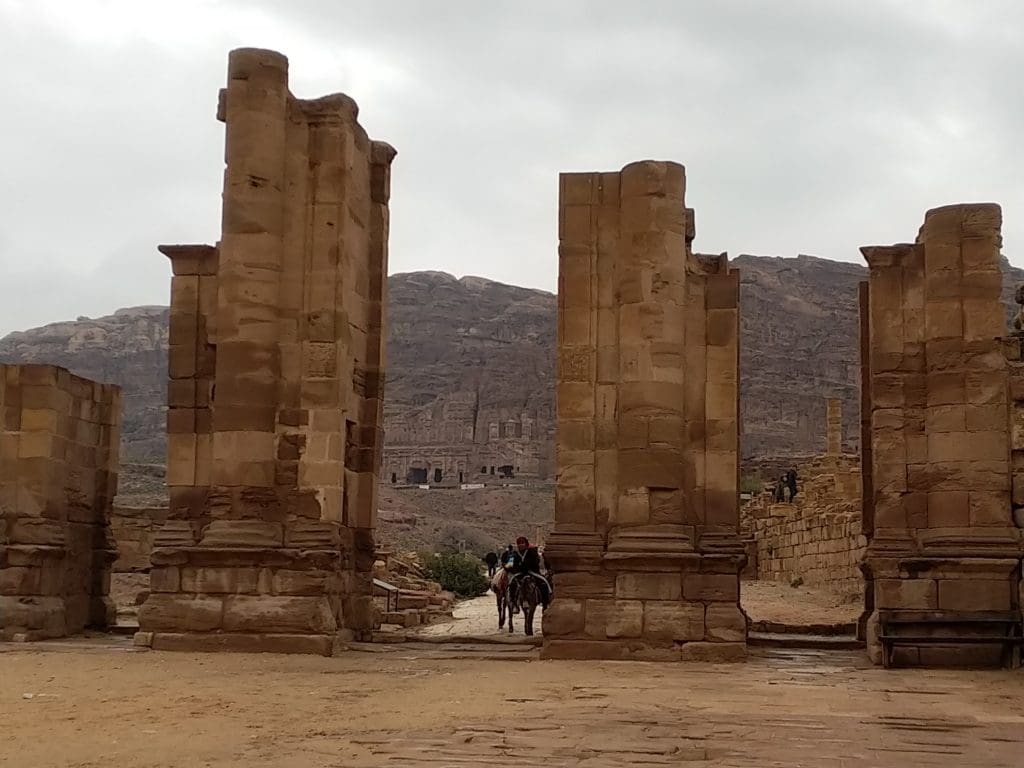
The Colonnaded Street was an original shopping street, or Agora, of ancient Petra that the Romans “updated” with columns during their second-century occupation. The trading metropolis declined rapidly with the advent of sea trading routes, and then in 363 AD, an earthquake destroyed much of the city.
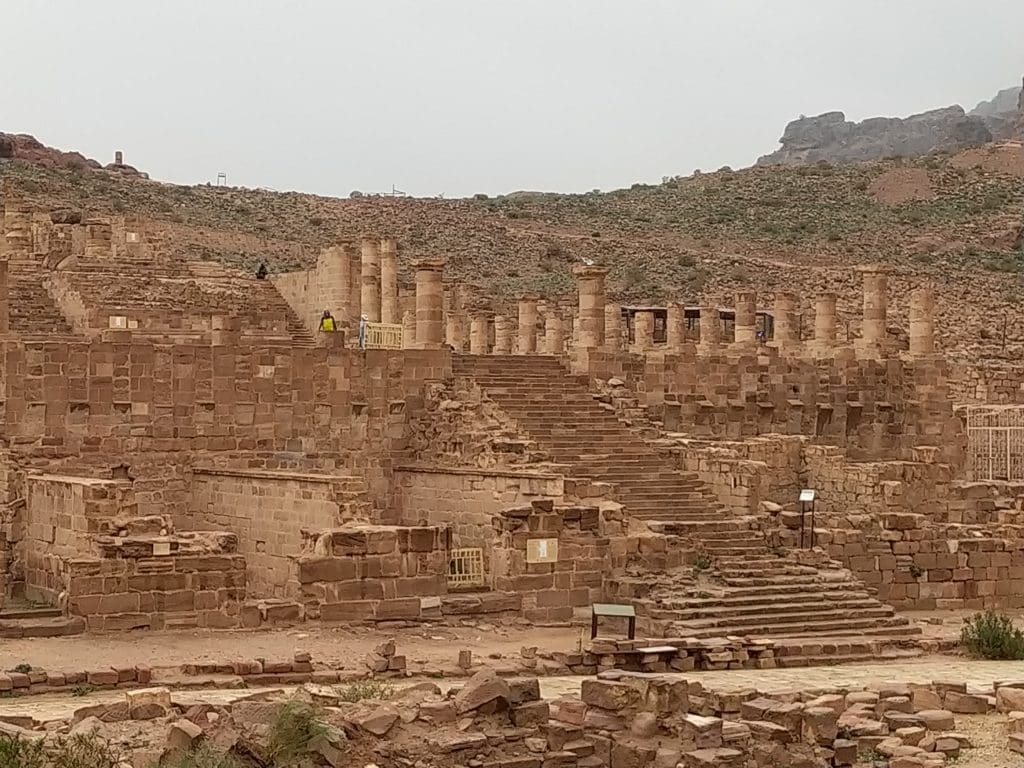
The Great Temple is one of the major archeological and architectural monuments of Petra. Vast in size, it was not carved from rock, but built with limestone. Elaborate floral friezes and entablature set above tall columns rose to a height of 60 feet.
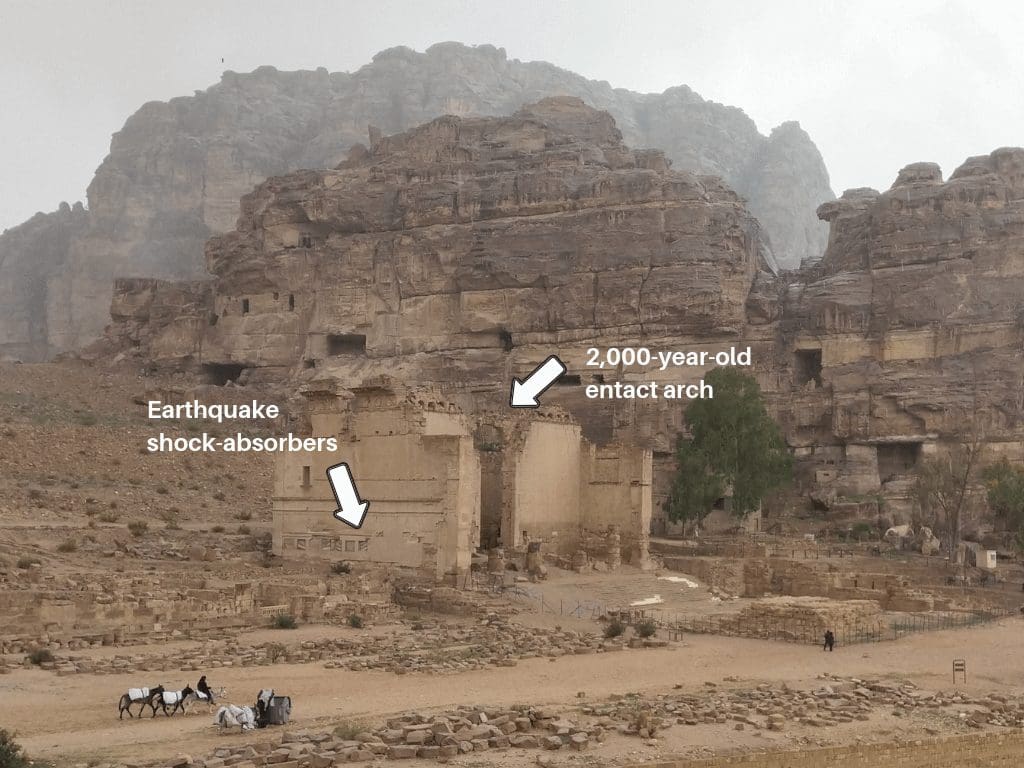
Qasr al-Bint is a square monument or temple that sits on a podium atop 26 marble steps. Amazingly, even after 2,000 years and multiple earthquakes, an archway spanning the entryway 75 feet above the floor is still intact. This is due to “shock absorbers” of sandstone layers built into the limestone walls.
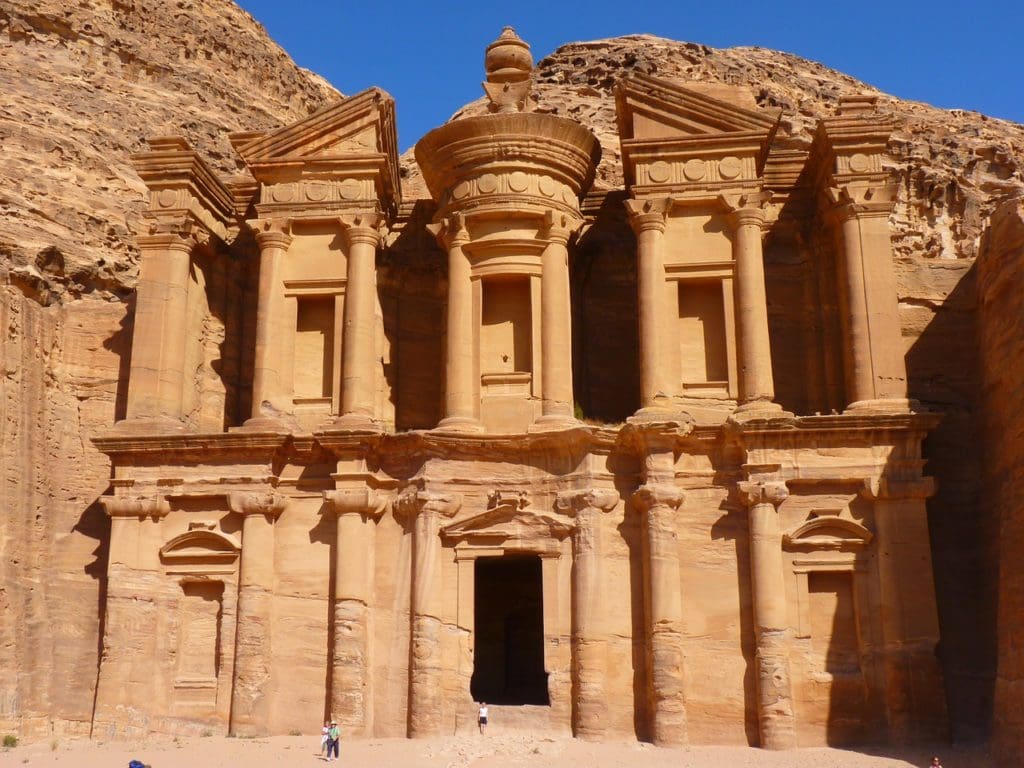
At the far end of the city, you’ll find one of the largest monuments of Petra, the Ed Deir Monastery. You must climb 900 stone steps up the mountain for the reward of seeing detailed facade. Inside, stone benches and an altar were a religious meeting place. In the second century, it was used as a Christian chapel and cross carvings were added inside.
Perspective on Petra Tourism
Other than a few barriers (you can’t go inside the Treasury) and the presence of other visitors, I felt like I just happened on the place as it was left millennia ago. There are no installed handrails, “slippery when wet” signs, or litigation precautions. Goats scampered up and down the rocky hillsides and it was easy to envision the early Bedouin lifestyle.
Petra became a very popular site after it became one of the New Seven Wonders of the World. That’s understandable. It’s an astounding archeological relic, but like many antiquities, it’s at risk of over-tourism. Every foot that trods the sandstone steps wears them down. Horse and camel hooves erode the roads. Thankfully, I did not see one single piece of trash on the entire site.
Petra is easily one of the most compelling sites I’ve ever visited. It’s intriguing for historians, architects, photographers, and culture seekers. I hope Jordan and its visitors continue to preserve it so that future generations get as much delight from it as I did.
To plan your visit to Jordan and Petra, get in touch with a Covington vacation advisor.







Beautiful pictures & great information. Certainly worth a visit as it is as interesting as Egypt.
Thanks, Mary Lou! Petra is as fascinating as Ephesus or Pompei, too. It’s a “do-not-miss” in my book! – Beverly